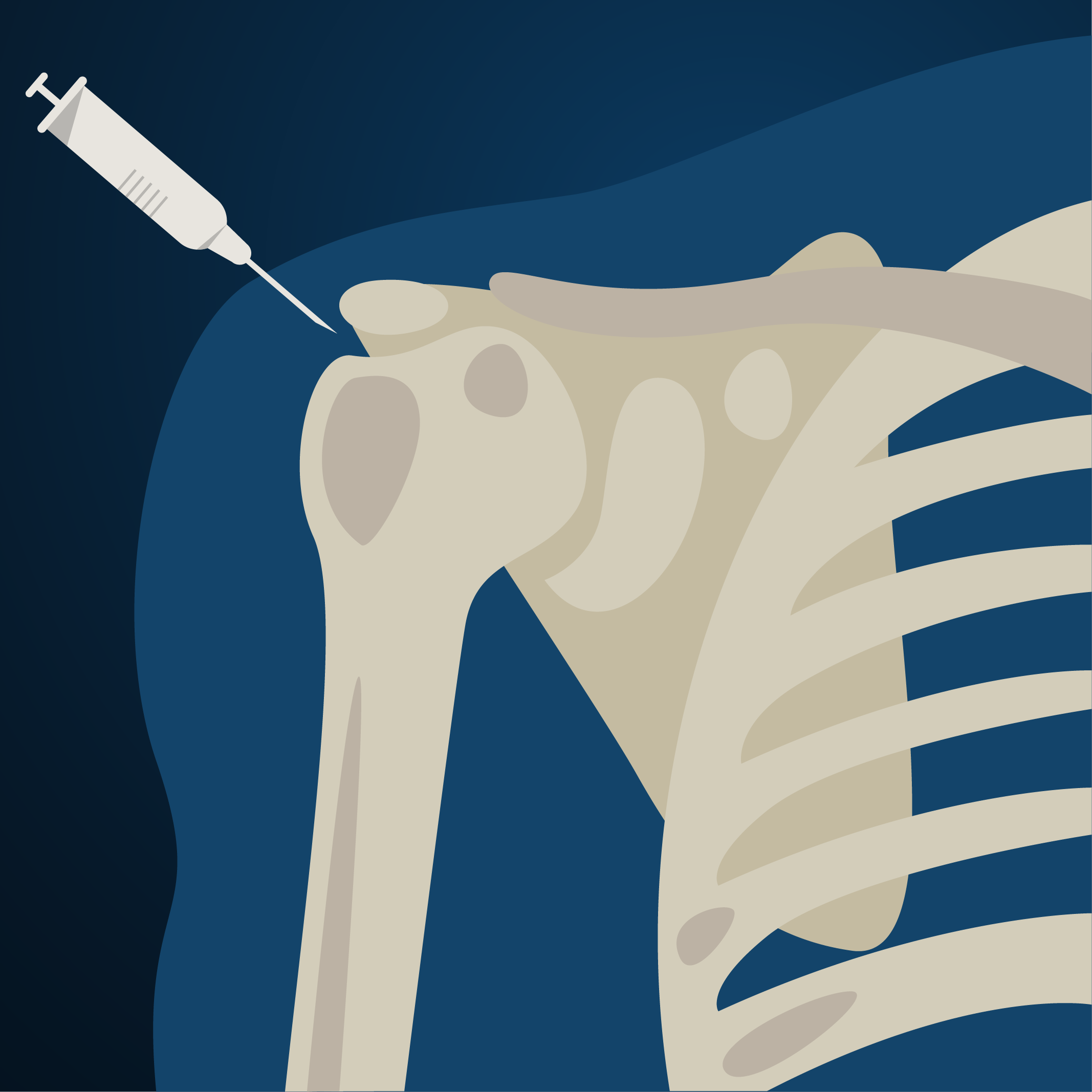
PRP Shoulder Treatment
Biologic treatments such as platelet-rich plasma (PRP) give patients an opportunity to reduce symptoms and support the body’s natural healing potential for a variety of orthopedic conditions.
Shoulder Anatomy

The shoulder joint, also called the glenohumeral joint, is a ball-and-socket joint that provides an exceptional range of motion. The ball is the head of the humerus, or upper arm bone, and the socket is the glenoid cavity of the scapula, or shoulder blade. Surrounding this joint is the rotator cuff, a group of four muscles and their tendons that stabilize the shoulder and make it possible to lift and rotate the arm.
In addition, cartilage and synovial fluid support the glenohumeral joint. The articular cartilage covers the bone ends and creates a smooth surface for movement, while the synovial fluid lubricates the joint to minimize friction. The labrum, which is a ring of cartilage around the glenoid cavity, deepens the socket and enhances stability. Ligaments and connective tissues also contribute to the joint’s overall integrity.
Platelets, an essential component of blood, play an important role in tissue repair and regeneration. They contain growth factors and proteins that assist with healing. PRP therapy uses these properties to treat shoulder conditions by promoting tissue recovery, reducing inflammation, and supporting the body’s natural healing process.
Injuries
PRP therapy can help with many shoulder injuries and conditions that involve cartilage or soft tissue damage. Common conditions treated with PRP include:
Partial Rotator Cuff Tears: PRP may promote tissue healing and reduce pain and inflammation in partial tears. However, it is not appropriate for complete rotator cuff tears.
Shoulder Arthritis: PRP can help decrease pain, swelling, and inflammation associated with arthritis. It may also slow disease progression by protecting remaining cartilage.
Frozen Shoulder (Adhesive Capsulitis): Early research suggests PRP may relieve stiffness and discomfort for some patients, although further studies are still needed to confirm its effectiveness.
These conditions often cause chronic pain, limited motion, and a noticeable impact on quality of life. For the right candidates, PRP offers a non-surgical option that can restore function and reduce discomfort, particularly when other treatments have not been successful.
PRP for the Shoulder
PRP therapy begins with collecting a small sample of the patient’s blood. The sample is processed in a centrifuge to separate the plasma and platelets from the other blood components. The resulting PRP is rich in growth factors and is injected into the affected shoulder area. These growth factors encourage tissue repair, decrease inflammation, and can help relieve symptoms of arthritis or partial tendon tears.
This therapy is especially helpful for patients with mild to moderate arthritis or partial rotator cuff injuries. For arthritis, the typical treatment plan includes three injections given about one week apart. For tendon or soft tissue injuries, two injections spaced about a month apart are often used to allow healing and limit soreness.
As a result of treatment, patients may notice less pain, reduced inflammation, and better joint movement. Although PRP may not completely eliminate symptoms, it often improves quality of life and allows patients to return to activities that were once painful.
When the cartilage continues to deteriorate, the joint can become increasingly stiff, painful, and inflamed. If conservative measures such as therapy, medication, and lifestyle adjustments do not provide enough relief, total shoulder replacement may be the most effective option. One of the most common symptoms that leads patients to seek further care is night pain that interrupts sleep. This symptom is very common in patients with shoulder arthritis.
Recovery
Recovery after PRP therapy is generally simple and comfortable. Most patients can return to regular daily activities shortly after treatment. However, they should avoid heavy or repetitive lifting for a short time. Light exercise such as walking, cycling, or using an elliptical machine is encouraged to maintain joint motion without strain.
Patients are advised to stop taking anti-inflammatory medications for at least a week before and for a couple of weeks after the injections. This is because such medications can interfere with the healing response that PRP stimulates. Physical therapy may also be recommended to build strength and flexibility, helping patients achieve better and longer-lasting results.
Over time, many patients experience meaningful and lasting pain relief as well as improved shoulder function. Although individual results vary, PRP continues to show promising long-term outcomes. Research in biologic therapies is ongoing, and future developments are expected to make these treatments even more effective and accessible for shoulder conditions.
Join Dr. Jones as he walks you through the steps of shoulder Platelet-rich plasma (PRP) therapy:

